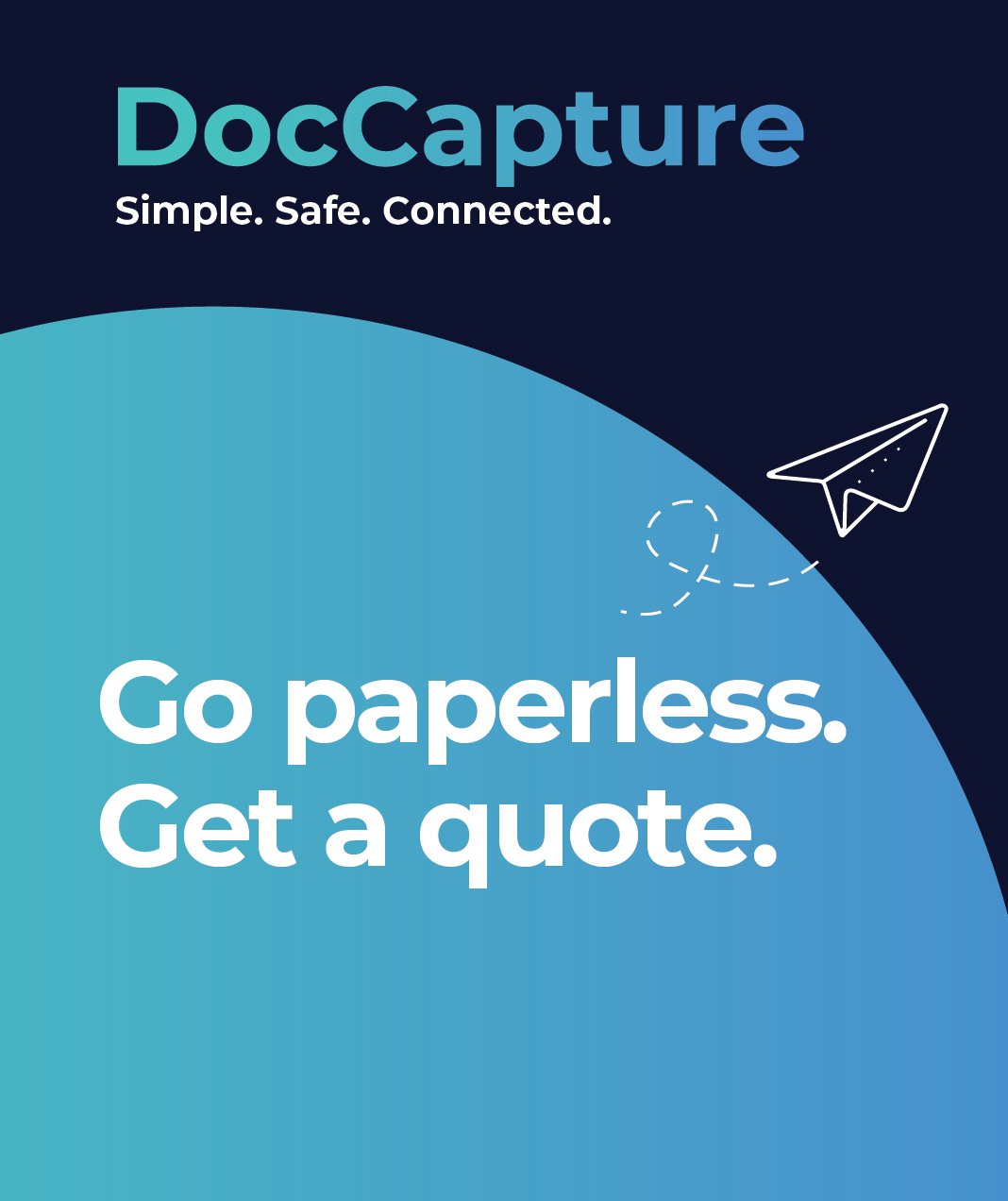How Document Scanning Can Enhance Educational Outcomes
Table of contents
Managing the vast volume of records in educational institutions—from enrollment forms and Individualized Education Programs (IEPs) to administrative reports and personnel files—has long posed a logistical challenge for school boards. For CIOs, superintendents, records officers, and IT leaders, these paper-based systems are more than just an organizational headache; they’re a barrier to efficiency, compliance, and ultimately, student success.
While document scanning may seem like a purely administrative initiative, its impact on education is profound. When schools convert physical files into digital formats, they unlock new capabilities for data management, security, and access—creating a ripple effect that touches everything from student support services to strategic decision-making. In this article, we’ll explore how document scanning does more than just declutter offices—it empowers educational institutions to enhance outcomes, streamline operations, and future-proof their systems.
The Administrative Load in Education
Educational institutions are tasked with managing a staggering amount of paperwork. From student enrollment packets to staff evaluations and compliance documentation, school boards are often drowning in paper. This reliance on physical documents not only consumes valuable staff time but also increases the likelihood of misplaced files and inefficient workflows.
For IT leaders and records officers, the challenges go beyond storage. Schools must meet strict regulatory standards, such as the Family Educational Rights and Privacy Act (FERPA), which mandates secure, confidential handling of student information. Maintaining compliance is particularly difficult when records are scattered across filing cabinets and offsite storage.
By shifting to digital recordkeeping through document scanning for schools, institutions can dramatically reduce their administrative burden. Digitized systems enable faster retrieval of documents, more efficient audits, and improved tracking of record lifecycles. It’s a foundational step toward digital transformation that can make every administrative task more streamlined and secure.
The Role of Document Scanning in Enhancing Efficiency
Time is one of the most limited resources in education. When staff members are bogged down searching through file cabinets or waiting for offsite records to be retrieved, it detracts from higher-value tasks—like supporting students and driving strategic initiatives. Document scanning directly addresses these pain points by eliminating the inefficiencies tied to paper-based workflows.
Digitized documents can be retrieved in seconds rather than hours. Whether it’s a teacher accessing a student’s IEP or a superintendent reviewing performance reports, digital access empowers quicker and more accurate decisions. Furthermore, document scanning integrates smoothly with existing systems like Student Information Systems (SIS) and Human Resources platforms, creating a centralized hub of accessible data.
Addressing common concerns such as system compatibility and user training, services like DocCapture offer tailored implementation strategies. This ensures that scanned documents aren’t just accessible—they’re actionable, usable, and aligned with how educational institutions already operate.
The result is not only improved operational flow but also a cultural shift: from reactive to proactive data management, allowing educators and administrators to focus more time and resources on learning outcomes.
Improving Access to Educational Data
In today’s data-driven education landscape, timely access to student information is critical. Superintendents and educational leaders rely on accurate, up-to-date records to make decisions that affect everything from curriculum development to resource allocation. When these records are trapped in file drawers or disparate systems, it delays action and limits impact.
Document scanning facilitates real-time access to comprehensive student data—enabling schools to act swiftly and intelligently. For example, digitized records can expedite IEP evaluations, ensuring students with special needs receive the support they require without unnecessary delays. Similarly, longitudinal tracking of student performance becomes simpler when records are stored in a centralized, searchable format.
This seamless access also enhances collaboration between departments. Teachers, counselors, and administrators can view and update records without navigating paperwork or requesting files from storage. The result is a more agile educational environment where decisions are backed by data and made with confidence.
To understand how this plays out in real scenarios, consider how scanning student records helps streamline everything from student transfers to academic interventions—ensuring no one falls through the cracks due to inaccessible or incomplete data.
Supporting Educational Equity and Continuity
Educational continuity is especially important in school districts where students frequently move or transfer. Lost or delayed records can hinder placement in appropriate programs, disrupt support services, and create gaps in a student's academic journey. With document scanning, schools can safeguard against these disruptions by ensuring records are instantly accessible, regardless of where a student moves within the district or even across state lines.
Digital records enable faster transitions by giving educators immediate access to vital information like academic history, health records, and special education plans. This supports smoother onboarding and minimizes the risk of students missing critical services during transitions.
Moreover, digitization contributes to equity. When all students have their records accurately maintained and easily accessed, educators can provide more consistent support, identify at-risk students earlier, and deliver resources where they are needed most. In this way, scanning student records is not just an operational improvement—it’s a tool for leveling the educational playing field.
For a deeper dive into the importance of digital continuity, explore From Enrollment to Graduation: The Digital Journey of Student Records
Cost and Security Benefits
For education leaders tasked with managing limited budgets, document scanning offers a compelling return on investment. The cost of maintaining paper records—including storage, retrieval, copying, and eventual disposal—adds up quickly. By digitizing records, schools can reduce or eliminate expenses related to physical storage, freeing up both budget and physical space.
Digital records also help avoid compliance fines and costly data breaches. Paper files are vulnerable to theft, loss, and damage from events like fires or floods. In contrast, scanned documents can be encrypted, backed up, and securely stored in compliance with FERPA and other privacy regulations. This enhanced security protects student and staff data while building stakeholder confidence.
Additionally, scanned documents support audit readiness. With organized, searchable digital records, schools can respond to audit requests swiftly and accurately—reducing stress and minimizing disruptions. As detailed in How School Boards Can Benefit from Document Imaging, the financial and operational benefits of document scanning far outweigh the initial investment.
Ultimately, embracing digital records is not just a strategic move—it’s a sustainable one, helping institutions stretch their resources while safeguarding their most sensitive information.
Conclusion
Document scanning may begin as a back-office initiative, but its ripple effects reach far beyond the filing cabinet. By improving data accessibility, reducing administrative load, enhancing compliance, and ensuring secure, cost-effective operations, digital records create a more responsive and equitable education system.
For CIOs, superintendents, and IT leaders, investing in document scanning is about more than going paperless—it's about laying the foundation for smarter decision-making and better student outcomes. As explored in Future-Proofing Education: Digitizing School Board Operations, the move to digital is a strategic imperative for institutions aiming to thrive in the modern era.
Ready to take the next step in enhancing education through document scanning? Fill out our "get a quote" form and discover how DocCapture can help your school board streamline operations and support long-term success.
Share this
You May Also Like
These Related Stories

Improving Educational Record Management with Digital Document Scanning

Reducing Costs in Financial Institutions with Document Scanning

